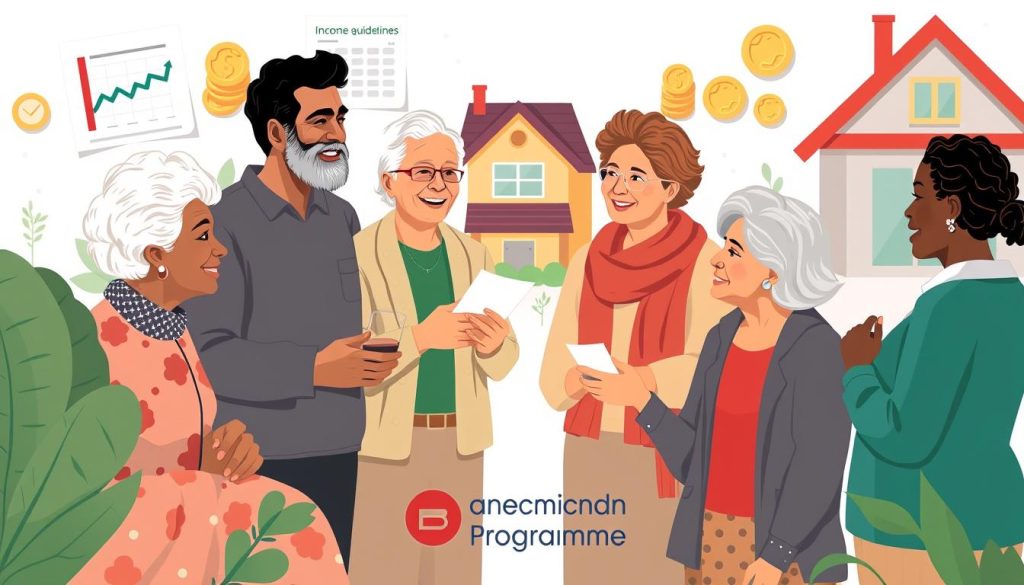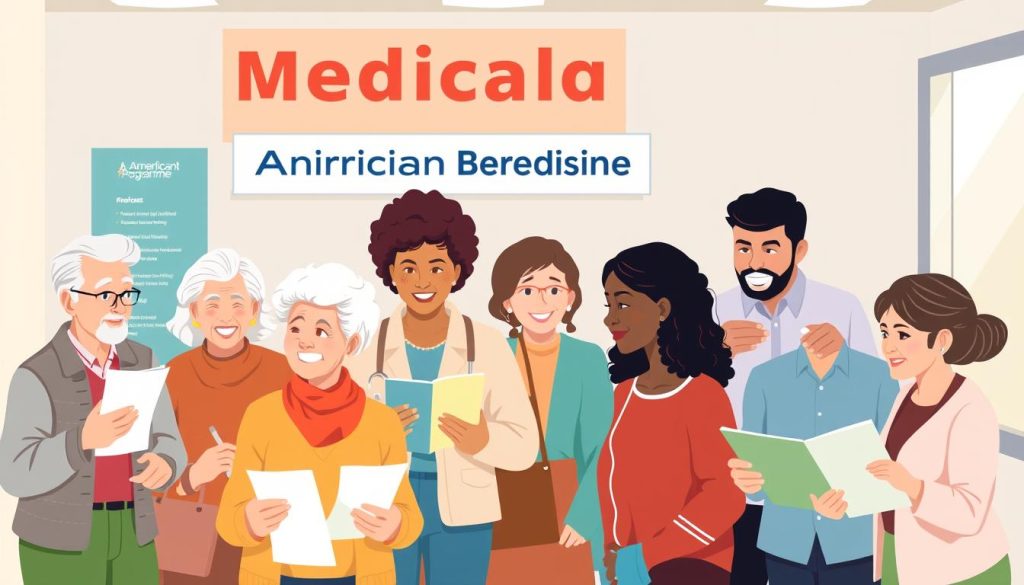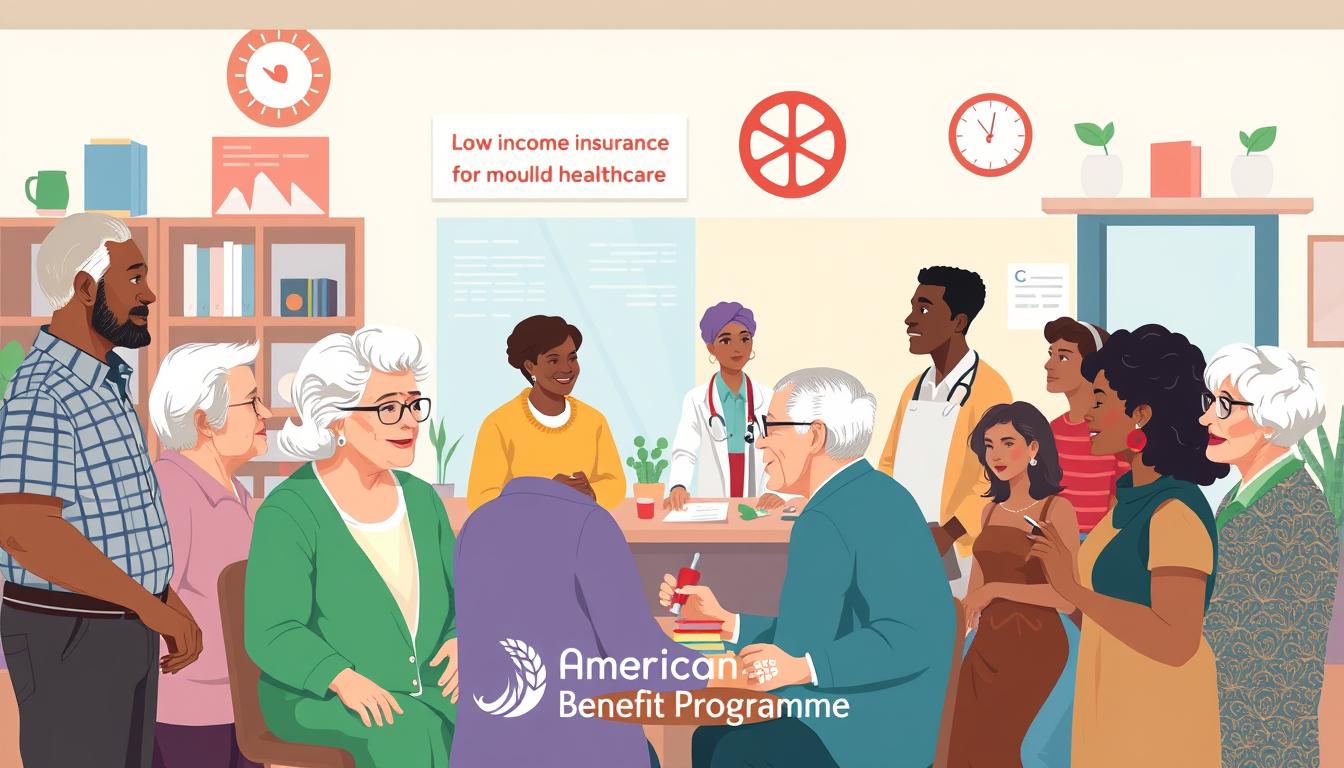Have you ever wondered why millions of Americans rely on Medicaid for their health care needs, yet many remain unaware of their eligibility? Medicaid is important for low-income families, kids, pregnant women, the elderly, and people with disabilities. It offers key medical benefits. In FY 2021, Medicaid spending was huge at $728 billion, with 69% paid by the federal government1. States set their own rules for who can get Medicaid. This makes knowing if you qualify both tricky and important.
This article helps understand Medicaid eligibility. It will show who can get this help and how to apply. Almost two-thirds of folks who leave Medicaid end up without insurance for a bit1. Knowing about Medicaid can help people get the health care they need.
Key Takeaways
- Medicaid offers essential health care access to low-income individuals and families.
- Eligibility criteria vary by state and include factors like income, age, and family size.
- Medicaid accounted for 27% of total state expenditures in FY 20211.
- Understanding the Medicaid application process is crucial for securing coverage.
- Many individuals may still qualify for benefits despite high income through programs like CHIP.
What is Medicaid?
Medicaid is an important program run by the federal and state governments. It helps people with low income get healthcare. Millions rely on it for doctor visits, hospital stays, long-term care, and more. Each state has its own rules and coverage options to help its residents.
In states with expanded Medicaid, your income decides if you can get help. If your family earns less than 138% of the federal poverty level, you might qualify2. Before, adults aged 18 to 65 with low income could get coverage. Now, some states still haven’t expanded Medicaid. This means some people don’t have any coverage at all2.
Medicaid does more than cover basic health needs. It can pay for 90 days of past medical bills if you’re eligible3. Whether you’re a citizen, green card holder, or have certain visas also matters3. Medicaid looks at different income levels for kids, adults, pregnant people, and those with disabilities3.
To wrap up, understanding Medicaid is key to accessing healthcare. It shows the effort to care for those in need in the U.S. As states choose what coverage to offer, knowing about Medicaid can help a lot.
Who is Eligible for Medicaid?
Medicaid is for people with low income and follows rules made by the government. It helps adults with little money, kids, pregnant people, older adults, and those who are disabled. States can make more people eligible if they choose4.
Some states let people pay medical bills to meet Medicaid’s money rules. This is called “spend down.”5 If you qualify for Medicaid and Medicare, you get more services5.
Medicaid helps pay for Medicare costs like monthly payments, deductibles, and co-pays5. This support is key. It lets eligible people get care without huge costs. Medicaid and CHIP together support families with low income and protect them from high health costs4.
Medicaid might cover past medical care for three months if you qualify4. If you were in foster care, you can get Medicaid until you’re 264. To figure out if you can get Medicaid, talk to your local Medicaid office. They can help you apply.
Medicaid Eligibility Criteria
Knowing how to qualify for Medicaid is key. It depends on where you live, if you’re a citizen, and how much money your family makes. In North Carolina, more people aged 19 to 64 can now get Medicaid6. A single adult earning up to $1,732 a month may qualify6. This limit goes up with more family members, showing the need to think about family size6.
In Pennsylvania, Medical Assistance helps certain groups like kids under 18 and pregnant women. They qualify if their income is 133 percent of the Federal Poverty Guidelines or less7. They consider income from jobs and pensions, but not benefits like SNAP7. You need the right papers, like a Social Security Number and proof of where you live7.
Illinois has special Medicaid programs for kids and parents of kids8. They look at how much money you make and if you’re legally in the U.S8.. People with permanent residency may get help without hurting their chance to become citizens8.
Medicaid rules can be complicated and differ by state. This affects how people get the healthcare they need.
Medicaid Income Guidelines
Medicaid income guidelines help figure out who can get low income health insurance. Each state has its own rules for how much money you can make to qualify, based on the federal poverty level. For example, a single person can qualify with an income of $1,732, while a family of eight can qualify with $6,0639. Monthly income eligibility for low-income families starts at $590 for one person and goes up to $1,343 for bigger families9.
There are special rules for different groups of people. A single pregnant woman can qualify with an income of $1,732, the same as a large family of eight pregnant women with $6,0639. In California, if you’re single or married, the income limits for Medicaid waivers are $1,732 and $2,352 per month10. Alaska sets the limits at $1,751 for singles and $2,593 for married couples10.
What you own also matters for Medicaid. You can have a house, one car, and certain exempted resources. A single person’s resources can’t be more than $4,000. A two-person family’s resources can’t top $6,000, adding $25 for each extra person11. Kids under 18 and pregnant women don’t need to worry about this resource test. This makes applying easier for them11.

| Group | Monthly Income Eligibility |
|---|---|
| Single Individual | $1,732 |
| Household of Eight | $6,063 |
| Low-Income Families | $590 – $1,343 |
| Pregnant Women (Single) | $1,732 |
| Pregnant Women (Household of Eight) | $6,063 |
| Regular Medicaid (Alaska, Singles) | $1,751 |
| Regular Medicaid (California, Singles) | $1,732 |
Age and Medicaid Eligibility
Understanding Medicaid eligibility by age shows big differences, especially for kids and the elderly. Children under 19 can often qualify thanks to programs like CHIP, which have higher income limits. This helps families afford health care. But, for seniors 65 and older, things like income and what you own matter more. States set these rules to decide who gets Medicaid12. Seniors have to meet specific income limits. For example, some places have a monthly income cap of $2,901 for Nursing Home Medicaid13.
Each state has its own rules about how much money you can make to qualify. For Aged, Blind, and Disabled Medicaid, this amount changes a lot. Some states put the limit around $967 monthly, but others allow as much as $1,25513. Knowing these rules is super important for older folks.
Also, Medicaid requires that you must be a citizen or a qualified alien to get benefits12. These rules make sure people who really need help can get it. They aim to provide care to those most in need.
Special Considerations for Pregnant Women and Children
Medicaid is very important for both moms and babies. It keeps them healthy. The number of births covered by Medicaid went up a lot after changes in the 1980s. Before these changes, less than half of the women in need got help in 198414. By 1991, Medicaid paid for 32% of all baby deliveries. This was a big increase from 15% in 198514.
Pregnant women can get Medicaid easier than others. They can have higher income and still qualify15. This helps them get care before the baby is born. It leads to healthier babies. This is very important for babies of color. They are more likely to get this help16.
Medicaid helps kids get doctor visits, shots, and care in emergencies. Even if a family makes a lot of money but has big medical bills, they can get help15. This helps families take care of their health without worrying about the cost.
Medicaid makes it easier for people who need help to get it. This is good for pregnant women and kids. They have made some changes so people can sign up faster. These changes help everyone be healthier and more equal16.
| Criteria | Medicaid for Pregnant Women | Medicaid for Children |
|---|---|---|
| Income Eligibility | Higher limits, often above $2,130 | Varies, typically below federal poverty level |
| Coverage Services | Comprehensive prenatal services | Routine check-ups, immunizations, emergency services |
| Impact on Health | Improves maternal and infant health | Significant reduction in child health disparities |
| Administrative Measures | Reforms to ease enrollment | Medically needy pathway available |
Medicaid Application Process
The Medicaid application process is different in each state. Some states ask you to apply in person. Others let you do it by mail, online, or on the phone. Places like health centers can also help you apply17. You need to fill out a form with your personal info, money you make, and who lives in your house. It’s important to have proof of when you were born, if you’re a U.S. citizen or live here legally, what money you get, and other assets. Don’t forget your Medicare card if you have one17.
Knowing how to apply for Medicaid the right way can make things less stressful. State agencies usually decide on applications in 45 days. But if it’s about a disability, it might take up to 90 days18. If you don’t send the needed papers on time, you might have to start over. This can make getting Medicaid take longer18. Local offices can help with applying for long-term care. They check if you qualify18.
You can pick someone to help you apply. Make sure this person knows a lot about your situation and money matters18. If your money or what you own changes, tell Medicaid right away. They check every year if you still qualify. You need to show papers that prove these changes18.
If you need special services like Nursing Home Medicaid, know what you have to show. This includes your home’s worth and if you have a mortgage. Mistakes in deciding if you qualify happen 25% to 35% of the time. This shows why it’s so important to have the right papers19.
Getting into Medicaid needs you to pay attention to details and what you need to show. Knowing what your state asks for helps make applying easier. It also helps get your eligibility checked faster.
Documentation Required for Medicaid Application
When you apply for Medicaid, you need the right documentation for Medicaid. You must show Medicaid necessary documents. These prove who you are and where you live.
Start with your ID. You can use a Driver’s license, Military ID, or school records if you’re under 16. You also need to show you’re a U.S. citizen. You can use a Birth Certificate or a State Department certificate20.
You need your Social Security papers too. This could be an award letter from Social Security. To show how much money you make, bring pay stubs or letters from relatives21.
If you get military benefits, bring those letters. You should also have proof of any money from rentals or royalties. A 1099 form or a bank statement will work for this20.
Make sure your home proof is up to date, within the last six months. Each state has different rules. To make things easier, check with your local Medicaid office. For more info, click here: official guidance.
Understanding Medicaid Coverage Criteria
Medicaid programs offer many Medicaid benefits for different health needs. Each state has its own rules for what services they provide. For example, in Washington State, it’s called Apple Health. This program helps people who qualify22.
To get Medicaid service coverage, things like how much you earn, your age, and where you live matter. There are plans for kids, pregnant people, and older adults5. Classic Medicaid is for people 65 and up or those who need a lot of care. MAGI Medicaid is for working adults, their kids, and people who care for them22.
Learning about these programs helps people choose the right care. It’s great for those who can get both Medicaid and Medicare. They get full coverage, help with Medicare costs, and more5.
| Medicaid Program Type | Eligibility Criteria | Services Covered |
|---|---|---|
| Classic Medicaid | Aged 65 and older; disabled | Long-term care; hospital services |
| MAGI Medicaid | Adults and children under income limit | Routine medical visits; preventive services |
| Dual Eligibility | Eligible for both Medicare and Medicaid | Extra Help for medications; coverage of copayments |
For more info on your state’s Medicaid coverage criteria, visit your local Medicaid office. It helps a lot! You can find out what care you can get and get help during the application process.
Medicaid Enrollment Process
The Medicaid enrollment process is open all year. This means people can sign up anytime.Medicaid sign-up is not limited like private insurance is. Once approved, members get lots of health benefits. These are important for staying healthy.
States check if people still qualify for Medicaid, especially after a big increase in members. This happened when the rules about dropping people were paused. Then, Medicaid and CHIP members grew by 32%, reaching 94.1 million.
If you want to know how to enroll in Medicaid, keep your info current. This helps you keep your benefits without a break. Many states now make renewing easier with automatic checks.
Working with community groups helps a lot during renewal times. Most states do this to make things smoother. They want to keep making the Medicaid enrollment process better. This shows they care about helping everyone get and stay enrolled.

Conclusion
Learning about Medicaid is important for people who want affordable health care in the U.S. Knowing about things like income rules and what papers you need helps. This knowledge makes applying easier and helps people get the health care they need.
Lots of checks between 2014 and 2018 found mistakes in how Medicaid decided if people could get it. Often, the mistakes were about how much money people said they made23. Thanks to ACA (Obamacare), more people, especially in Black and Hispanic groups, got Medicaid24. This has helped many people get better health care and has also been good for the states24.
People need to keep learning about Medicaid so they can take care of their health. By checking if they can get Medicaid and signing up, people can make sure they get help. This helps everyone live healthier and happier lives25.
Source Links
- 10 Things to Know About Medicaid | KFF
- Medicaid expansion & what it means for you
- Medicaid – OCHIA
- Medicaid & CHIP coverage
- Medicaid
- NC Medicaid Eligibility | NC Medicaid
- Medicaid General Eligibility | Department of Human Services
- Introduction to Medicaid
- Department of Social Services
- Medicaid Eligibility Income Chart by State (Updated Nov 2024)
- Medicaid Eligibility
- Eligibility
- 2025 Income, Asset & Care Requirements
- Medicaid and Pregnant Women: Who is Being Enrolled and When
- Medicaid Eligibility | ACL Administration for Community Living
- State Approaches to Simplify Medicaid Eligibility and Implications for Inequality of Infant Health
- How to apply for Medicaid – Medicare Interactive
- Applying for Medicaid | ACL Administration for Community Living
- How to Apply for Medicaid Long-Term Care
- DOCUMENTS NEEDED WHEN YOU APPLY FOR HEALTH INSURANCE
- What do I need to apply for Medicaid?
- Understanding Medicaid and Medicare
- GAO-20-157, MEDICAID ELIGIBILITY: Accuracy of Determinations and Efforts to Recoup Federal Funds Due to Errors
- The Effects of Earlier Medicaid Expansions: A Literature Review | CEA | The White House
- Brief Summaries of Medicare & Medicaid

Leave a Reply